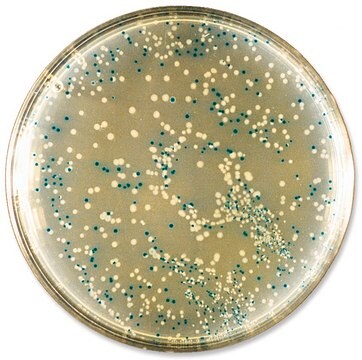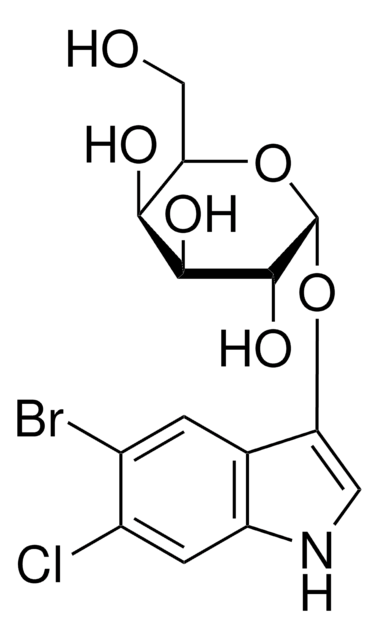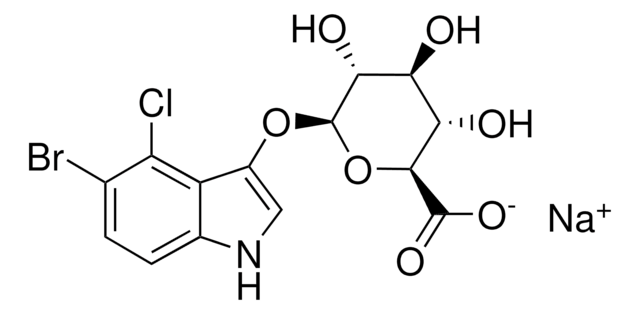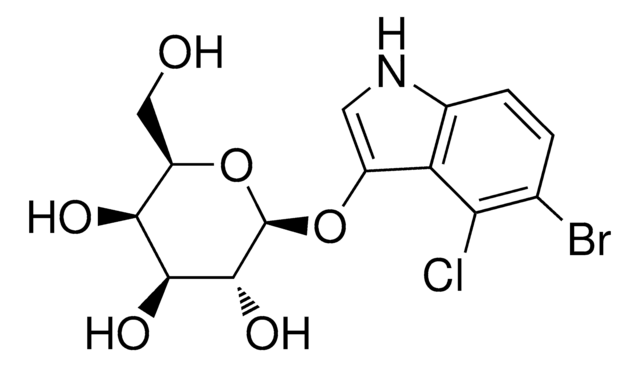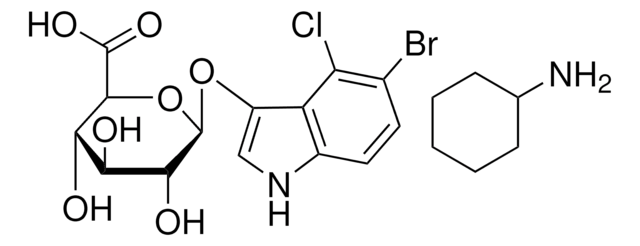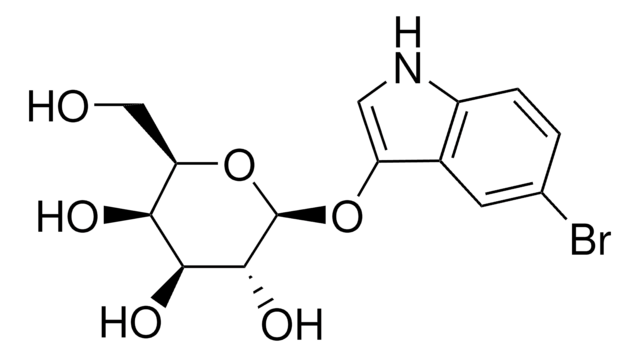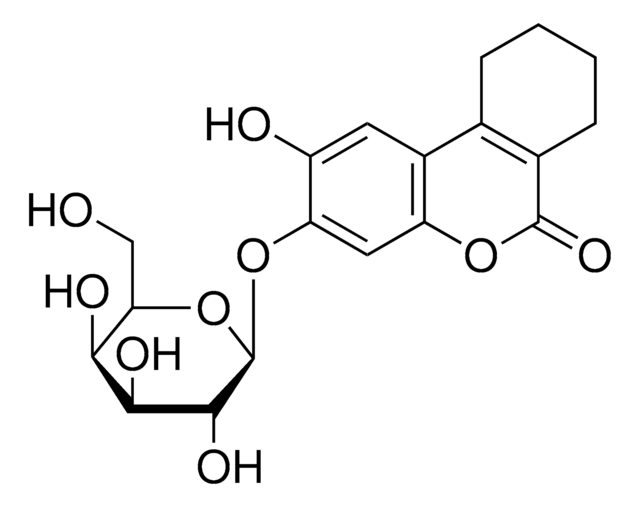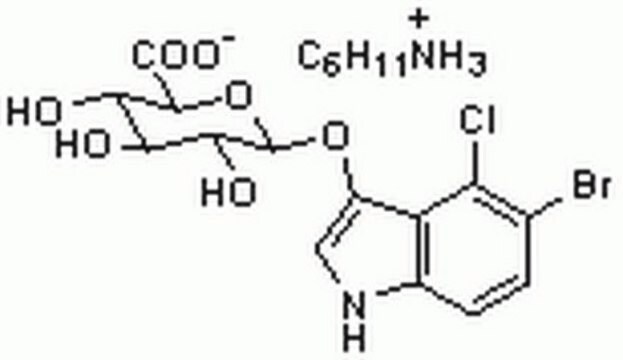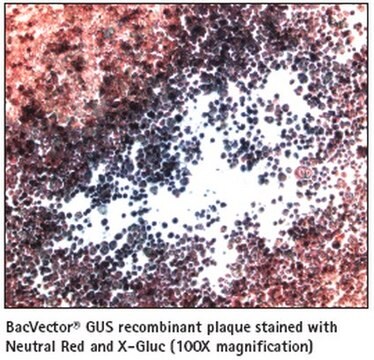B6650
X-GlcA
reagent for selection of recombinant bacterial clones
Synonym(s):
5-Bromo-4-chloro-3-indolyl β-D-glucuronide cyclohexylammonium salt, X-GlcA, X-glucuronide CHA salt
About This Item
Recommended Products
grade
Molecular Biology Reagent
for molecular biology
Quality Level
sterility
non-sterile
Assay
≥98% (TLC)
form
powder
technique(s)
nucleic acid detection: suitable
solubility
DMF: soluble
suitability
suitable for β-galactosidase test
storage temp.
−20°C
SMILES string
NC1CCCCC1.O[C@@H]2[C@@H](O)[C@@H](O[C@@H]([C@H]2O)C(O)=O)Oc3c[nH]c4ccc(Br)c(Cl)c34
InChI
1S/C14H13BrClNO7.C6H13N/c15-4-1-2-5-7(8(4)16)6(3-17-5)23-14-11(20)9(18)10(19)12(24-14)13(21)22;7-6-4-2-1-3-5-6/h1-3,9-12,14,17-20H,(H,21,22);6H,1-5,7H2/t9-,10-,11+,12-,14+;/m0./s1
InChI key
JXCKZXHCJOVIAV-CYRSAHDMSA-N
Looking for similar products? Visit Product Comparison Guide
General description
Application
X-GlcA has been used in histochemical staining of root sections for light microscopic observation.
Principle
related product
Choose from one of the most recent versions:
Already Own This Product?
Find documentation for the products that you have recently purchased in the Document Library.
Customers Also Viewed
Articles
Today, diverse studies report the benefits of probiotics, such as inhibitory effects on pathogens, aid in the management or prevention of chronic intestinal inflammatory diseases or atopic syndromes, and support to the immune system. Potential beneficial applications abound, researchers continue to evaluate the effictiveness and clarify the mechanisms of action of probiotics.
Our team of scientists has experience in all areas of research including Life Science, Material Science, Chemical Synthesis, Chromatography, Analytical and many others.
Contact Technical Service